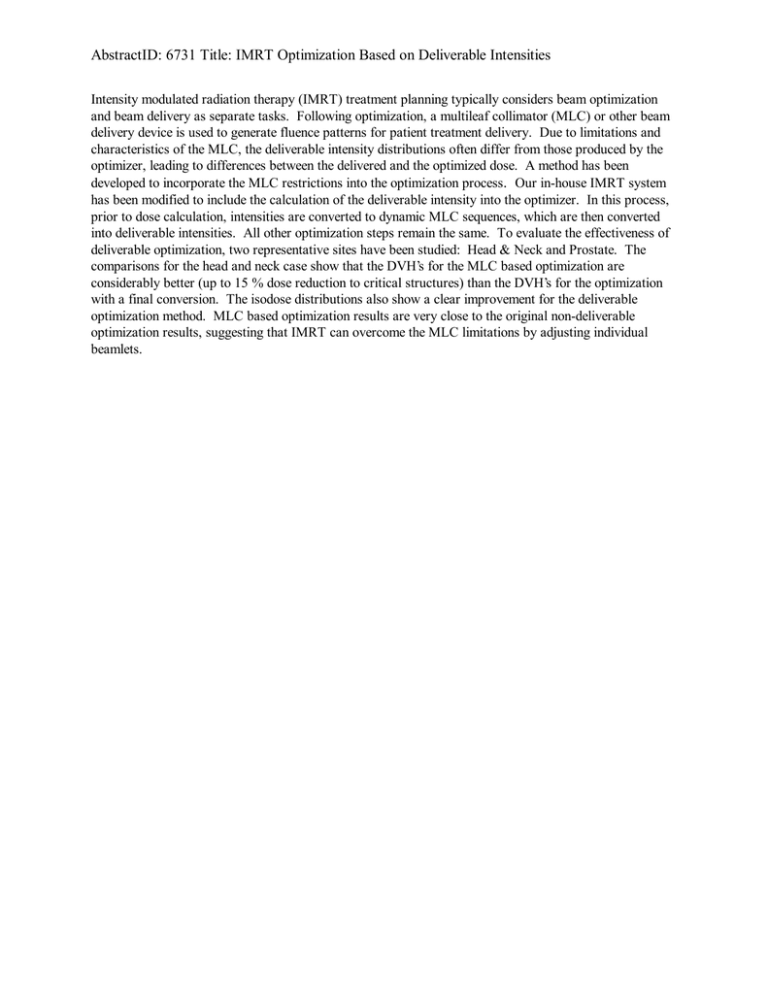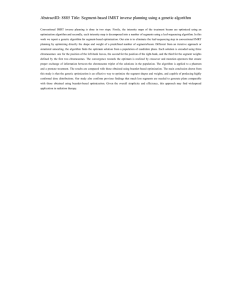AbstractID: 6731 Title: IMRT Optimization Based on Deliverable Intensities
advertisement

AbstractID: 6731 Title: IMRT Optimization Based on Deliverable Intensities Intensity modulated radiation therapy (IMRT) treatment planning typically considers beam optimization and beam delivery as separate tasks. Following optimization, a multileaf collimator (MLC) or other beam delivery device is used to generate fluence patterns for patient treatment delivery. Due to limitations and characteristics of the MLC, the deliverable intensity distributions often differ from those produced by the optimizer, leading to differences between the delivered and the optimized dose. A method has been developed to incorporate the MLC restrictions into the optimization process. Our in-house IMRT system has been modified to include the calculation of the deliverable intensity into the optimizer. In this process, prior to dose calculation, intensities are converted to dynamic MLC sequences, which are then converted into deliverable intensities. All other optimization steps remain the same. To evaluate the effectiveness of deliverable optimization, two representative sites have been studied: Head & Neck and Prostate. The comparisons for the head and neck case show that the DVH’s for the MLC based optimization are considerably better (up to 15 % dose reduction to critical structures) than the DVH’s for the optimization with a final conversion. The isodose distributions also show a clear improvement for the deliverable optimization method. MLC based optimization results are very close to the original non-deliverable optimization results, suggesting that IMRT can overcome the MLC limitations by adjusting individual beamlets.

